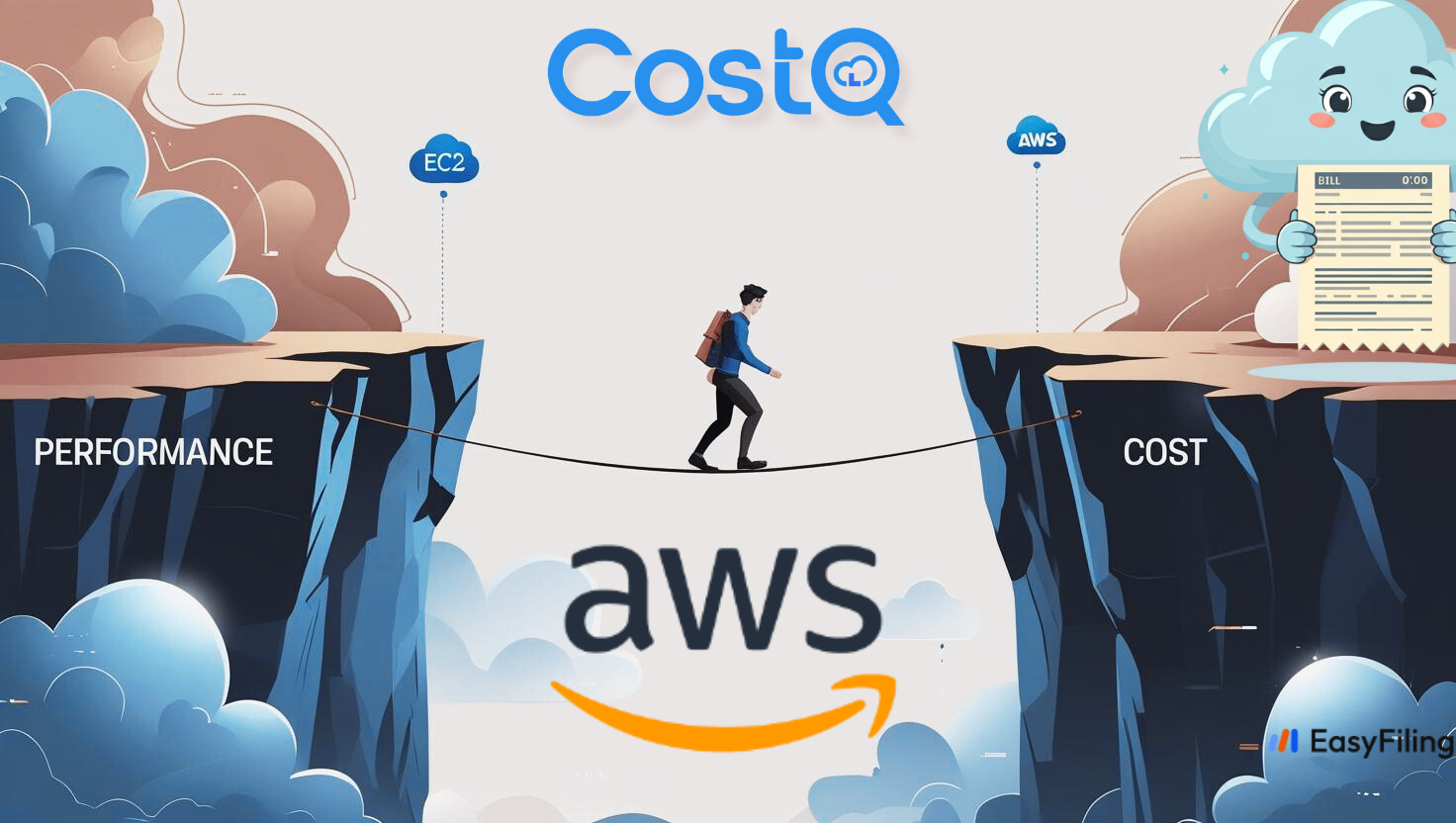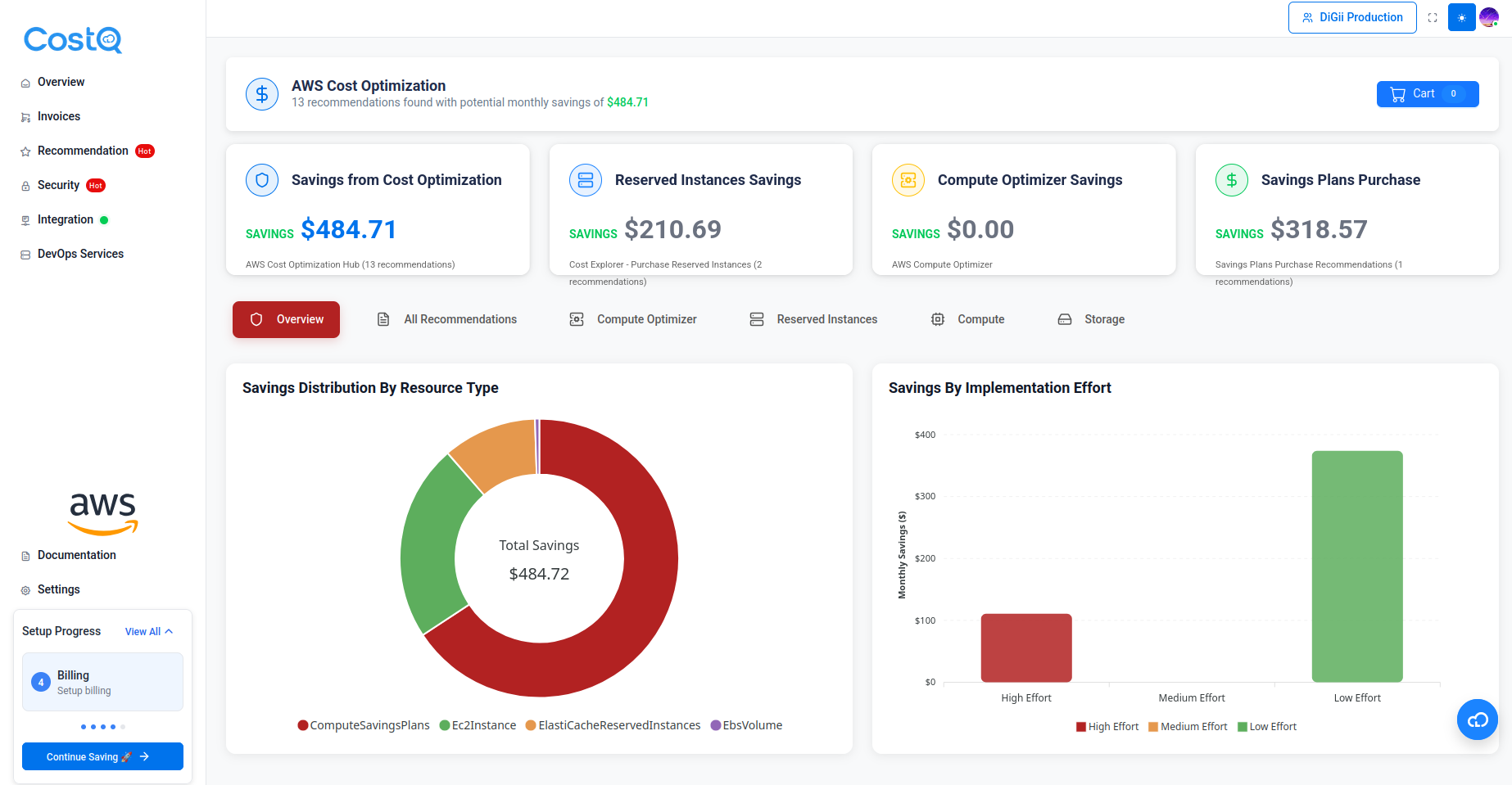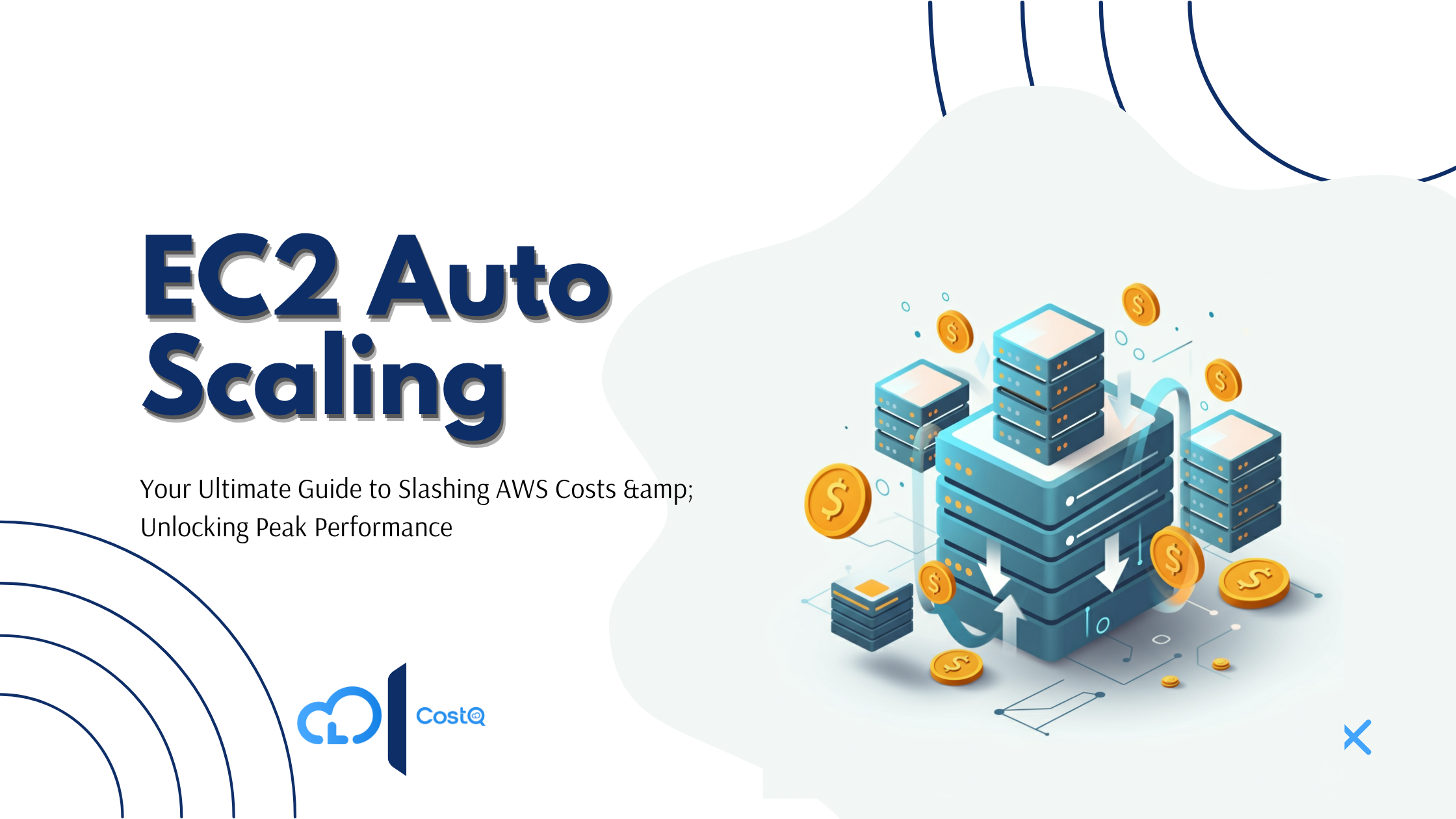To put it lightly, please consider all factors including managing the AWS resources. At one moment, you are trying to figure out how to deal with a traffic spike as your app is on the verge of crashing. Then, you’re met with an AWS bill that seems to have bloated out of nowhere, courtesy of unused instances. For a growing enterprise, this is far from an inconvenience; it poses significant roadblocks to advancement.
The AWS Tightrope: Are You Sacrificing Cost for Performance or Performance For Cost?

The burdens of managing AWS resources feels like a never-ending conflict, so let us put that behind us and talk straight: Are you inadvertently bleeding money to keep your apps fast and responsive? Or worse, sacrificing customer satisfaction just to keep cloud bills in check?
This tension isn’t new. It’s the balancing act every CTO, DevOps lead, and cloud architect wrestles with: performance vs. cost. You want your application to feel like a Lamborghini but pay like it’s a bicycle.
And guess what?
You’re not alone. Many businesses toggle between under-provisioning and frustrating their users, or over-provisioning and shocking their finance department.
So what if I told you… you don’t have to choose?
EC2 Auto Scaling: Performance & Cost in Harmony
What if those two worlds could coexist? Impeccable application performance and painless spending in AWS? This is where Amazon EC2 Auto Scaling becomes your cloud’s Swiss Army knife.
You don’t have to be stuck with static infrastructure that can’t breathe or bend. Instead, you can scale dynamically with EC2 Auto Scaling – adjusting your capacity automatically based on traffic patterns, not gut feelings.
-
Your traffic spikes? New instances spin up.
-
Things slow down? Unused ones vanish.
-
Meanwhile, your costs and performance are in sync.
That’s not magic. That’s Auto Scaling done right.
This Is Not Just Another Technical Essay
Do not consider this as just another technical essay you’ll skim through, only to find out you’ve been reading the AWS documentation again.
This blog post is based on lessons from running production workloads on AWS for real businesses, with real budgets, and real headaches.
We’re going to uncover how Auto Scaling, when done right, is not just a feature—it’s a strategy. And not just any strategy, but a force multiplier for both stability and cost efficiency.
Unraveling The Operative Nature of EC2 Auto Scaling: The Cloud’s Smart Thermostat Technology
In essence, Amazon EC2 Auto Scaling can be described as an automation service that adds or removes EC2 instances from your application environment based on conditions you define.
Think of it as a smart thermostat for your compute layer. It monitors performance metrics and usage thresholds (such as CPU utilization, memory consumption, or custom metrics) and adjusts infrastructure accordingly.
Instead of needing manual oversight to scale EC2 capacity up or down, Auto Scaling operates around the clock to ensure the right number of instances are always running.
Key Benefits:
-
Exceptional Quality of Service: Avoids downtime or lag during traffic surges by provisioning additional compute resources.
-
Maximal Return on Investment: Frees up unused resources during quiet hours so you never pay for what you don’t need.
-
Unshackled Interactions: Makes developers and operations teams more agile, as they don’t have to micromanage compute provisioning.
The Undeniable Victories: How EC2 Auto Scaling Became a Mission-Critical Component
The Unarguable Perks: Reasons Why EC2 Auto Scaling is a Core Business Function
-
Slash Your AWS Bill: Automatically adjusts capacity to demand, saving serious money.
-
Guarantee Application Uptime with No Hitches: Reduces downtime and user frustration by ensuring availability.
-
Seamless High Performance Delivery, Every Time: Serves a consistent, high-quality user experience—even during peaks.
Choosing Your Scaling Superpowers: Types of EC2 Auto Scaling
AWS allows customization of scaling to the internal demands and rhythm of the application, thanks to these configuration types:

-
Target Tracking Scaling – Think cruise control. Automatically maintains a metric at the target value you define.
-
Step Scaling – Adds/removes instances in step responses to CloudWatch alarm breaches.
-
Simple Scaling – Triggers a scaling activity after a single CloudWatch alarm.
-
Scheduled Scaling – Spins up or spins down resources based on a predefined time window.
-
Predictive Scaling – Machine-learning based scaling that anticipates traffic patterns (based on historical data).
Configuring Auto Scaling for Cost Control with EC2 Resources: A Complete Tutorial
1. Design Your ASG: The Foundation
-
Launch Template or Launch Configuration: Defines instance types, AMIs, security groups, etc.
-
Networks Design Include: Load balancers, availability zones, VPCs.
-
Capacity Settings: Min, Max, and Desired capacity rules.
2. Deploy Advanced Command Center Scaling Policies: The Core of the Operation
-
Target Tracking: Set a target metric (e.g., 60% CPU) and AWS handles the rest.
-
Step and Simple Scaling: Fine-tune thresholds and instance count changes.
-
Disable Instance Scale-In Protection: Prevent critical services from being terminated by Auto Scaling.
3. Activate CloudWatch Alarms: Your Watchful Guardians
-
Primary ASG Metrics: CPUUtilization, RequestCountPerTarget, etc.
-
ELB Metrics: HTTPCode_ELB_5XX, Latency, etc.
-
SQS Metrics, if relevant: ApproximateNumberOfMessagesVisible, etc.
-
Custom Metrics: Application-specific metrics via CloudWatch agent.
4. Lifecycle Hooks: Custom Actions (Extra Control)
Lifecycle hooks let you insert custom scripts or integrations (e.g., notifications, config management) during instance launch/terminate processes.
5. Test Aggressively & Repeat
Test your scaling policies under simulated load conditions before going live.
Transforming Businesses through Wild EC2 Auto Scaling
Use cases across industries:
-
E-Commerce Platforms: Handle flash sales without crashing or overspending.
-
Media Streaming Services: Adapt capacity for peak prime-time viewing hours.
-
AI & ML Workloads: Dynamically spin up compute for model training jobs.
-
Online Gaming: Automatically respond to player spikes after game updates.
The Not So Obvious: The Other Side of EC2 Auto Scaling
Even though they are a powerhouse for scalability and availability, Auto Scaling groups come with operational caveats:
-
Cold Start Times: New instance provisioning can take time, affecting real-time responsiveness.
-
Complex Policy Management: Misconfigured policies may lead to over-scaling or under-scaling.
-
Not All Workloads Are Stateless: For stateful services, scaling requires additional storage/session replication mechanisms.
These complexities are manageable but demand careful planning, configuration, and continued monitoring.
Costq.ai’s Genius Optimization With Peak AWS Efficiency Calculations
 Enter Costq.ai, our smart cloud cost optimizer and AWS resource brainchild.
Enter Costq.ai, our smart cloud cost optimizer and AWS resource brainchild.
Auto Scale EC2 Actions and Costq.ai Intelligence
-
AI Power Beats Out Every Dollar Spent, Reducing Costs and Optimizing
-
Group Buying Discounts for Shocking Savings Approached 40%
-
Saves Time and Guarantees Cap on Amount Of Money Sitting Uselessly Allocated
-
Non-Intrusive, Effortless Integration with AWS
-
Gain Actionable Insights and Savings Metrics with Reporting
-
Best Results Obtained with Minimal Effort, Proven by Leading Cloud Advocates
Conclusion: Scale Intelligently, Soar Higher, Spend Wisely.
Building resilient, performant, and cost-sensitive applications on AWS requires mastering EC2 Auto Scaling and enhancing its power with tools like Costq.ai.
Whether you’re scaling for millions of concurrent users or deploying for your first thousand, you deserve cloud infrastructure that is responsive, cost-effective, and smarter.
And guess what?
You’re not alone in this journey.
Unlock AWS Savings Overview
➡️ See Costq.ai In Action: Request Your Personalized Demo Today!
➡️ Unlock Exclusive AWS Savings: Explore Costq.ai Features & Group Buying!
Your Questions on Costq.ai and EC2 Auto Scaling Answered
Q1: Is Auto Scaling within EC2 a paid-for-service feature by AWS?
A: Yes, but the Auto Scaling service itself is free. You only pay for the resources (EC2, ELB, CloudWatch) used.
Q2: What is the relationship between EC2 Auto Scaling and Reserved Instances (RIs) and Savings Plans?
A: If the attributes of a running instance match those of a RI or a Savings Plan, the discounted rate applies—even if that instance is managed by Auto Scaling.
Q3: Does EC2 Auto Scaling support stateful applications?
A: Indeed, it does—but it requires smart architectural adjustments like EFS, Elasticache, sticky sessions, or Amazon ECS with persistent volumes.
Q4: How about my application with unique precise requirements per each scaling action? Is Target Tracking flexible enough?
A: Target Tracking is flexible and excellent for general use, but Step Scaling or custom policies via Lambda can offer more granular control.
Q5: What will Costq.ai help me achieve if I’m already proficient at using EC2 Auto Scaling?
A: Costq.ai goes beyond EC2. It correlates patterns, finds savings across workloads, models better configurations, and acts as a co-pilot for DevOps.
Q6: In what way does Costq.ai work with my pre-existing EC2 Auto Scaling groups?
A: Costq.ai works with AWS via read-only access and optional automation via role permissions. It analyzes usage, suggests improvements, and can automatically apply policies based on your cost-control goals.
These Blogs May Be Helpful For You.
Ultimate Guide to Amazon EC2: Everything You Need to Know
5 Expert Strategies to Slash the Cost of EC2 Instances and Maximize Your AWS Savings
EC2 Instance Types: Choose the Right AWS Server for Your Workloads
